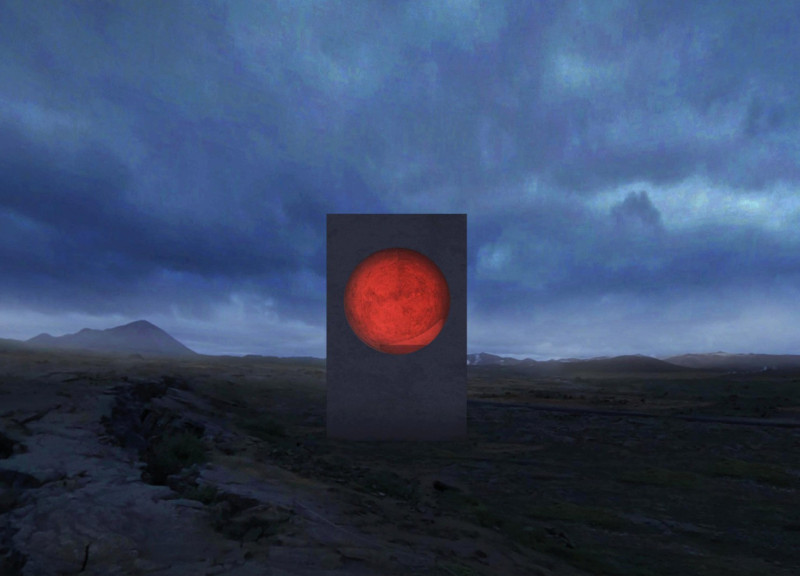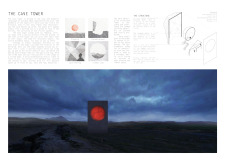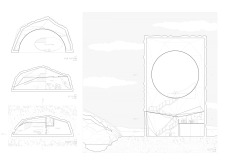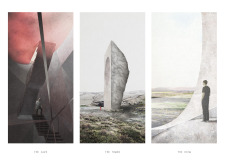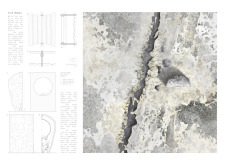5 key facts about this project
The Cave Tower is located in the rugged landscape of Iceland, designed to provide visitors with opportunities to engage with the environment. It serves primarily as an observation point, encouraging exploration of the region's dramatic views. The design concept focuses on a tall structure that interacts with the terrain, creating a connection between the built environment and the natural landscape.
Geometric Design
The tower is marked by its significant vertical form, which resembles a raw cut in the earth. From various viewpoints, it captures attention against the backdrop of Iceland's terrain. The entrance is discreetly positioned on the east side, leading into a spacious interior designed to evoke the sensation of being in a cave. This thematic choice fosters a unique relationship between visitors and the site, enhancing the exploration experience.
Spatial Journey
Visitors move through a carefully designed sequence of spaces, illuminated by warm dark orange lighting that adds to the atmosphere. As people ascend, their anticipation grows, culminating in a viewing area at the top that provides expansive views over the surrounding landscape. From this height, the contrast between the tower and the natural environment becomes evident. A notable rift in the ground reveals the wild beauty of Iceland, deepening visitors’ connection to the area.
Functionality and Materiality
The design includes essential program elements such as a viewing platform, a café, restrooms, and storage areas, all focused on visitor comfort. The structure is made from in-situ cast reinforced concrete, which helps it blend into the natural setting while maintaining stability. Internally, smooth concrete panels contribute to its raw appearance. A smaller heated area enhances energy efficiency and comfort, separated from the unheated spaces by a glass partition.
Path Integration
Access to the Cave Tower is via a path constructed using a simple dowel system that supports a beam structure. This design allows for a grounded experience, with planks of differing sizes forming the pathway, encouraging a visual connection with the landscape. The path promotes an organic approach to the structure, reinforcing the idea of discovery as visitors draw nearer.
The south elevation showcases clear geometric lines, where the circular viewing area meets the square body of the tower. This arrangement emphasizes the function of the tower while standing in contrast to the north face, which has a rough and unsystematic look. This visual contrast highlights the immersive experience that the Cave Tower aims to offer, inviting visitors to appreciate the natural beauty surrounding them.


